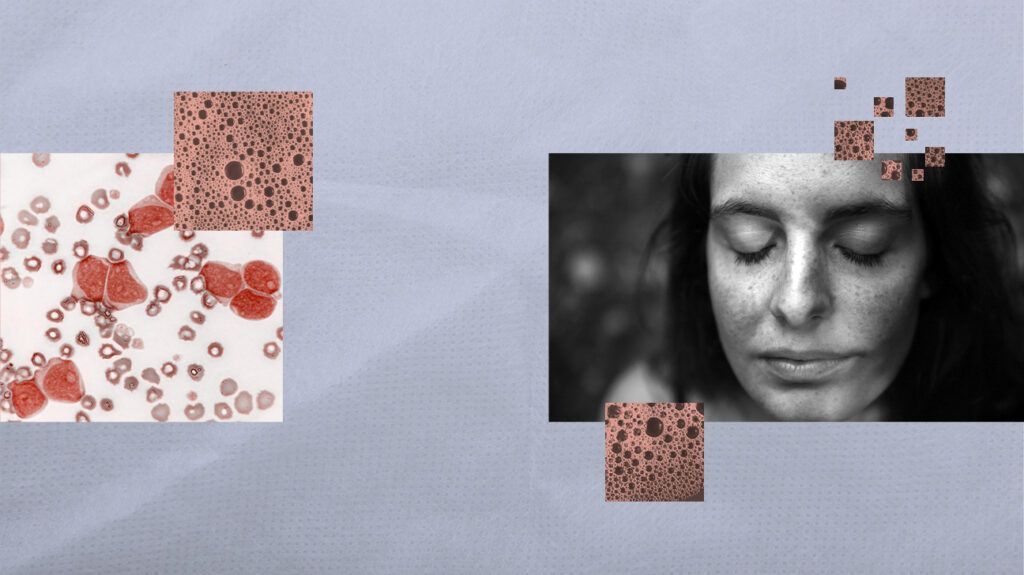Myeloblasts are a type of immature white blood cell that form inside the bone marrow. Abnormal numbers of them can indicate serious health conditions.
White blood cells are part of the immune system, which helps the body fight off infection and disease.
Myeloblasts do not typically appear in the blood. Therefore, the presence of myeloblasts in the blood and a high amount in the bone marrow may indicate a health condition.
This article discusses myeloblasts, conditions they may indicate, when to consult a doctor, and more.

Blast cells are immature white blood cells that reside in the blood and bone marrow. Research from 2018 suggests that blast cells should make up no more than 5% of healthy bone marrow cells.
While inside the bone marrow, healthy white blood cells should mature into fully functioning blood cells, which are then released into the bloodstream to fight off infection and disease.
There are two types of bone marrow blast cells — myeloblasts and lymphoblasts.
Myeloblasts
Myeloid stem cells begin in the bone marrow and develop into red blood cells, platelets, or granulocytes. Granulocytes are fully functioning, mature white blood cells known as neutrophils, basophils, and eosinophils. These mature white blood cells help the body fight off infection and disease.
Myeloblasts describe when myeloid stem cells
Lymphoblast
Lymphoblasts are a type of bone marrow blast cell that
Learn about the functions and components of blood.
When a person has a high myeloblast count in the bone marrow, this may signal a health condition in the bone marrow.
Myelodysplastic syndromes
Myelodysplastic syndromes (MDS) are a group of blood and bone marrow cancers in which blood cells do not mature into fully functioning, healthy blood cells.
There are several different types of MDS, one of which is related to myeloblasts. This is MDS with excess blasts, previously known as refractory anemia with excess blasts. In 2016, the
When a person has MDS with excess blasts, they have a low red blood cell count, and approximately
Approximately
MDS with excess blasts can progress to acute myeloid leukemia (AML). Research from 2022 suggests that
Acute myelogenous leukemia
Acute myelogenous leukemia is also known as acute myeloid leukemia (AML).
AML is the
When a person has AML, there is an increase in the amount of myeloblasts in the blood and bone marrow. The AML myeloblasts do not function correctly or mature into healthy white blood cells. The more AML myeloblasts a person has in the blood and bone marrow, the less space there is for healthy blood cells and platelets.
Symptoms of AML can develop quickly over several weeks and typically get worse over time. Symptoms
- breathlessness
- fatigue
- tightness in the chest
- bruising easily
- excessive bleeding
- frequent infections
- unexplained weight loss
- weakness
If a person has AML, they will typically undergo treatment including:
A person should contact a doctor if they experience symptoms of anemia, particularly if symptoms develop suddenly.
Symptoms a person should look out for
- weakness
- fatigue
- frequent infections
- loss of skin color
- bleeding
- bruising easily
What is the difference between a myelocyte and a myeloblast?
Myelocytes and myeloblasts are both types of immature white blood cells that develop inside the bone marrow.
Both are related to promyelocytes, another type of immature white blood cell that myeloblasts develop into. Promyelocytes then develop into myelocytes.
Myeloblasts are typically larger than myelocytes. The fluid within myeloblasts will appear blue when doctors view them under a microscope. This is due to the stain that doctors use to aid in visualizing cell structures. Myelocytes are typically smaller and take on a pink color due to staining.
Are myeloblasts normal?
Myeloblasts are immature forms of white blood cells that do not develop into mature white blood cells. Therefore, they do not function correctly. Myeloblasts
It is possible for a person to have a low amount of myeloblasts in the bone marrow and not go on to develop MDS or AML. However, a person in good health will not typically have any myeloblasts in the bone marrow.
White blood cells are a part of the immune system that help the body fight off infection.
Myeloblasts are a type of immature white blood cell that do not develop into fully functioning white blood cells.
Myeloblasts can multiply and take up space in the bone marrow. This can limit the amount of space for healthy blood cells to develop.
When a person has a myeloblast count of over 5%, they may be more at risk of developing a health condition. These can include types of blood and bone marrow cancers such as acute myeloid leukemia and myelodysplastic syndromes.
Symptoms of these conditions can include fatigue, weakness, unexplained weight loss, breathlessness, and frequent infections.
A person should consider contacting a doctor if they experience these symptoms, particularly if they appear suddenly and progress rapidly.
